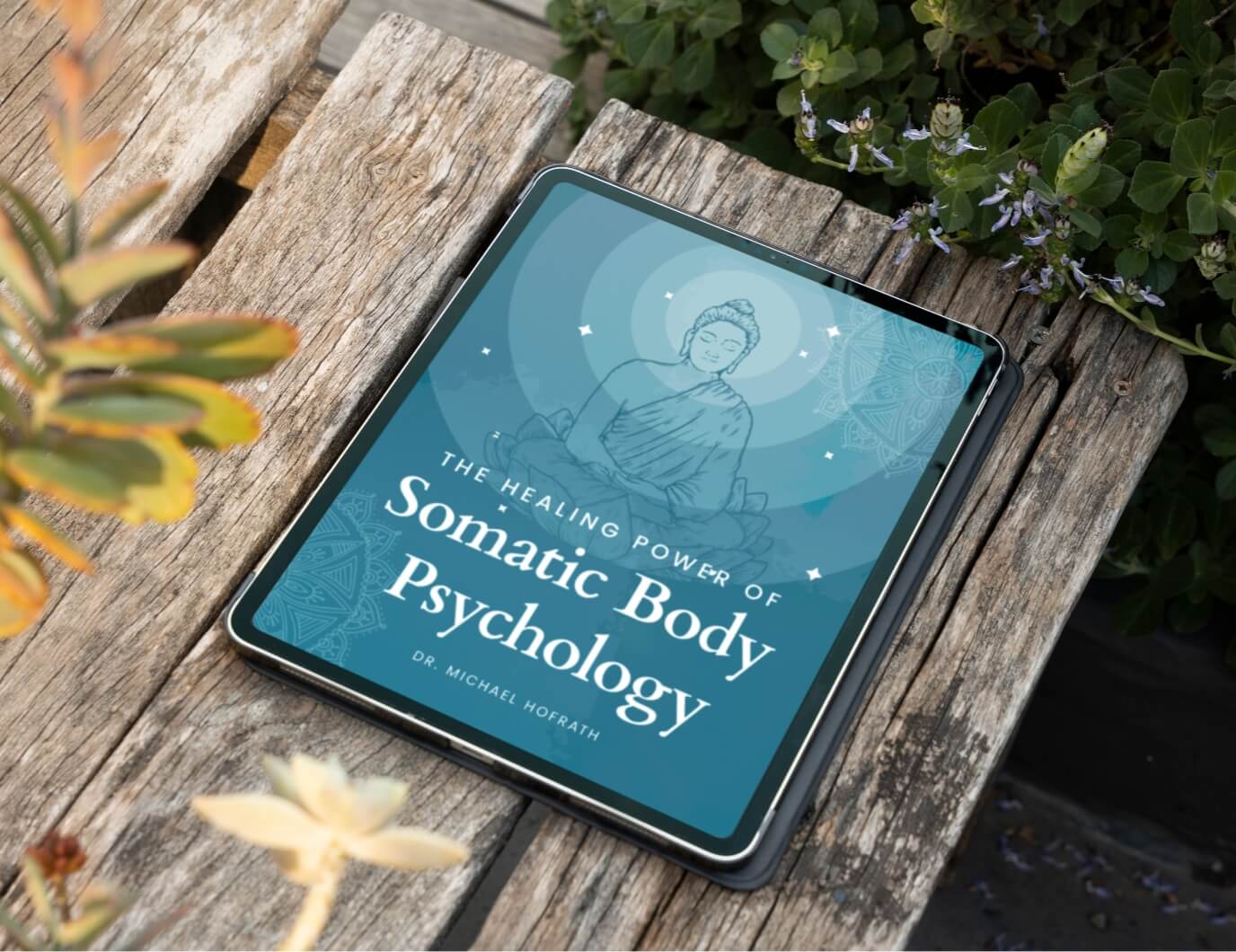
Personal Self Integration
Integration, according to Jung, is a process in which both the individual and collective unconscious are integrated into the personality. Integration represents positive psychological development that leads to psychological and emotional maturity and assists us in moving past negative habits, behavioral patterns, limited belief patterns and old stories.
Integration of past childhood trauma allows us to move through and recognize what we have learned from those experiences. From a spiritual perspective integration of old wounds moves us out of living in denial to the truth. Very few of us can claim to have even a partial integrated sense of self, yet alone living a fully integrated life.
“Integrative” is a holistic, therapeutic approach that combines a huge diversity of modalities andapproaches and fuses them together, so they all work in unison. This is considered an “eclectic” therapeutic approach, as various modalities and techniques are selected and applied that best fit the client’s needs. Eclectic therapists and healers are flexible, creative and very often highly intuitive in their selection of theories, techniques and approaches.
Depth-oriented therapists work through the unconscious underworld of psyche to better understand how conscious thoughts, feelings and emotions are processed and manifest in our behavior. Depth approaches seek to meet and befriend the various aspects that make up our sense of Self, which influences our behavior and way of being in all areas of one’s life.
Depth approaches develop and build relational rapport with each of these various Selves, and this rapport allows one to understand, expand and enrich their influence on our sense of self and entire life. Integration work is an individuation process that provides us with necessary life skills and simple, self-empowering tools to be used in all areas of our life.
Benefits of this work include:
- Internal coherence
- Greater fulfillment
- Expanded creativity
- Alignment of purpose
- Inner support and wisdom
- Synthesis of divergent aspects
- Direct access to guidance
- Richer life experiences
- Deeper understanding
- More openness
- New perceptions
- Lasting change
To regard a person ‘as a whole’ can mean many things. It cannot reasonably mean knowing everything about a person, but it must involve an adequate idea of the various aspects of their personality, from character, attitudes, behaviour, to personal history and abilities… plus more besides. Any concept of the person’s whole being must allow for a meaningful inter-relationship therein of the many ‘parts’ or aspects of the person’s entire life. This must include both the facts and values of a person’s life, how all kinds of feelings, thoughts, behaviour and relationships appear to that person, including the relation to the perceived past and present or the anticipated future.
To grasp the essentials of the person we require again and again to start from something akin to a biographic understanding of the individual life and life-view and this must precede advance judgements, leading cues or generalisations like those derived from analytical theories. This does not exclude all generalisations or even all preconceptions (as long as these are kept as if ‘in parentheses’) but it accents personal human understanding, which opens itself to learning about both the depths and the breadths of each person as a subject.
The integrated (holistic) nature of human being itself can be lost almost entirely to view by the over-dominance of the analytical approach without a synthesistic overview. Much modern psychology of the academic-scientific kind is so varied and divided into specialities that a person is left unaided to make whatever overall picture he can of a mass of disparate research fragments and information. Only when scientific empirical analysis is balanced by synthesis in understanding – reviewed in conscious reflection and by explicit, systematic means – can part and whole mutually fulfil each other in a science, which then itself approaches the ideal of being holistic.
There is a relationship between a person’s ‘wholeness’ and personal integrity. Firstly, a whole is an integral unit, as when we speak of degrees of ‘integrated personality’. A lesser or non-integrated personality is seen in the severe pathological conditions of persons who are suffering such disorders as split or even multiple personality, schizophrenia and a variety of other conditions which reduce or split up the ‘integrated personality’. A truly integrated personality virtually implies a higher level of integrity of character One key aim of psychological knowledge is to examine how character integrity or personal self-integration arises – or is achieved, maintained, or apparently lost. These questions have long been investigated in many human cultures well before the advent of European science, but is it one with which modern psychological science is concerned, even if not stated in these terms. Psychological theories and therapies which aim to understand and cure mental problems invariably have assumptions – if not always consciously known or clearly stated – about the goal of a ‘healthy’, ‘sane’ or ‘integrated’ personality, though the literature tends to emphasize those problematic features which lack such qualities.
Where fragmented understanding of the human psyche arises, it is likely to result at least partly from rejecting the nature and validity of personal experience, people’s own accounts, as being unreliable, ‘subjective’ or only anecdotal. The nature of scientific method is such that the unique and unrepeatable, the particular and accidental, are systematically eliminated so as to arrive at statements having general validity. Clearly, in view of the huge variety of cultures and of the tremendous personal differences between persons representing them, a strict scientific method based on the physical sciences will not provide information valuable to any fuller understanding of persons as such.
To deduce ‘factors’ that influence behaviour, such as by experimental psychology or by statistical measurements (‘multi-variable factor analysis’) have their own value in throwing light on behavior and general trends, but contribute little to aid our understanding of the individual human as a ‘whole. Psychological statistics are sought in respect of many variables of behaviour and circumstances, being derived from questionnaires and interviews which collect many bits of information from a large number of subjects and then pick them out of their contexts and cross-reference them to arrive at supposed general facts about people. There are, however, very many sources of possible error involved. Just to know how a person understands and interprets a question is itself a great difficulty, making questions flexible and not too narrow to enforce arbitrary answers, then the selection of which information may be relevant to a hypothesis requires great precision and care. question, gathering the data, interpreting it, processing it and drawing correct conclusions about it.
Yet the main problem is the fragmentation is perhaps that precisely measurable data seldom bears any relation to the experiential world of a person, which encompasses a great range of intricately inter-connected events, ideas, judgements, circumstances, values, hopes, problems, actions, reasons and so on, almost ad infinitum. But this human sphere is ‘reduced’ to a system of co-ordinates: ‘reductionism’ discovers sets of ‘multi-variable factors’ that are then supposed to indicate the causes of what we do, regardless of the personal reasons we may have. However intelligently gathered and accurately processed the data may be, it can simply not even approach the essential – and hence most important – character of persons because it reduces qualitative phenomena to quantity.
Such ‘reductionism’, doubtless increases the amount of information available about human behaviour in general, which adds to the fund of validated hypotheses upon which psychologists can draw when trying to improve their understanding of people. Studies in physiology and neurology or the conditions of our physical environment cannot penetrate the meaningful subjective sphere of any person, the qualitative personal experience of being and living with purpose, but they can at least have a supportive function in human studies. Likewise with genetics, where the study of genes may reveal how personal characteristics, even mental and emotional inclinations are passed down, yet cannot penetrate the inner experience of consciousness, of its memory continuity or scope, the actual values and ambitions held at any stage in development and so on.
he first principle is don’t try to change yourself. By trying to change yourself, one part is always set against the other. A dominant part is not satisfied with the other, usually the opposite. For instance, the „pusher” inside of you thoroughly hates the „good-for-nothing”, hence will try to re-educate this „disturbing element”. However, one part fighting the other, isn’t exactly where you were waiting for? Because wasn’t this your suffering from the very beginning after all? Immediately after birth – or even before – your parents had an expectation about how you „should become”. In fact, very few children are accepted exactly the way they are. You always have to become “somebody else”. Not the one you are, but how they hope you are going to be, has been engraved in you from the very start. It is (was) one of the causes of your (later) suffering.
be what you were never allowed to
The reason why I am “against change” is that it is not the way to bring about wholeness. The ambition to change yourself, only makes the problem bigger. People, who want to change themselves, lack self-acceptance, the only thing that could really heal them. So e.g. no “spiritual” fights against the “ego” anymore, one of toady’s most popular self-tortures. Free yourself from this „spiritual” idealism, which in fact is the latest variation of the old guilt and sin complex – old wine in new bags – a new self-hatred indeed. No, in order to be whole, you have to become open to all those parts, which for some reason or another were once rejected: your fear, pain, anger and „ugliness”, together with – as a consequence of – all kinds of early conclusions, which from then on have been dominating your life. Once consciously and lovingly accepting yourself, lots of things will be spontaneously and miraculously changing!
Step number two in your self-healing is to consider all “disturbances”, problems, emotions, conflicts, obsessions and suffering not as you, but as parts of yourself, which once – mostly at the start of your life – were denied, excluded, rejected or suppressed. It will be a great relief to you to realize, that you are not your „negativity”- with all its effects: feeling guilty, inferiority complex, selfishness, „spiritual” ambition – but that it is only part of you. You have it, rather than being it. Realizing this, you can handle them better, because they don’t push you down anymore. As a child you couldn’t cope with them, usually because you felt too much risk by expressing, showing or even feeling them. At childhood you are completely helpless, you depend entirely on your parents (environment). Hence, any risk is a survival matter. However, now this survival situation is no more there, you can open yourself up to it, without any risk.
Step number three is to confirm, that the disturbing emotion is there. “Okay, this part of me does feel irritated”. To acknowledge the fact, is where it is all about. Usually your reflexes automatically fight any unwelcome emotion immediately after it has come up, or even before. You are not aware of it and yet this is happening hundreds of times a day. This „keeping down” takes enormous amounts of energy. It causes lots of stress. Therefore a simple confirmation is a big relief. When a sigh comes up, it means that the emotion was (is) very deep indeed.
Step number four is giving the emotion – the part – every space it needs. You do it, by consciously identifying with the part. Is there an irritation, then – after you have recognized it as a part of yourself – you subsequently become it? E.g. „yes, this morning, when I woke up, I was so fed up with Jack. I feel so neglected by him. And this goes on already for such a long time” etc. For a while – 5 to 15 minutes – you let the part talk, while totally identifying yourself with it. You will be surprised: the part has so many things to tell (to you). To give the emotion every space it needs may not be always easy. To feel the pain, the anger, the fear or the suppressed lust for life is not always easy. However, if you feel the urge to cry, shout, move or fight, you cry, shout, move and fight.
The fifth principle. What is crucial at this stage is, that you let your emotion make a shift from the present to the past. If you’re angry with your wife, drop focusing on your wife, but imagine being that small child you once were. Replace the image by that of your mother, your aunt or your teacher from that long time ago. If you feel pain because of something, you imagine being that very small child you once were, feeling that pain. And don’t make a mistake, those emotions are usually not „childlike”. To the contrary, they are mostly unobstructed and enraged. Express the emotions of that particular child, while simultaneously remaining the observer. You let go, while staying in control.
you can only “let go”, what has been accepted first
The sixth principle. In this stage, it is very important that you try to express yourself the same moment the emotion comes up. In daily life this could be difficult sometimes, since you are mostly busy and in company. The reason is, that only in that particular moment your system is ready to express the emotion, and a real release could take place. Everything inside is co-operating with it; hence you should not miss the opportunity. Do not wait until the evening, „when you have more time”. So you apologize to the people you’re with and go to your sleeping room, to give space to the part, the talking, the crying, and the anger. You may “strangle the pillow”. The second rule is that you always do the things alone. In all these stages, you never involve anybody else in it.
Step number seven is to step back from your identification with the part, by identifying with the conscious self – the reflection – again. Note: only if in the previous stage you have given all space to the emotion. Reflection always comes after the (full) experience. You now have changed your inner position from the part to the whole again. From here you look at the part, reflecting about what just happened. Now, there appears to be an inner distance between you and your part. Hence, you are in a position of overview and insight. You now try to look at it from the perspective of interpretation. Before, you were identified with the emotion, now you are here and the emotion is „there”. You are now able to understand the meaning of what has happened, you interpret and comment on it. For instance, you recognize the pain, the anxiety or the fear from the past. You understand that at that time, these parts were too painful to become integrated. Sometimes great insight is born a real breakthrough indeed. Suddenly you see the „connection”, the origin of your pain. Often early childhood conclusions appear to be the root of it all: „they didn’t love me”, „I have to survive” or „feeling is dangerous”, „I am loosing control”, „they trapped me” or „nobody can be trusted”, may have been a conditioning context for many of your later experiences in life. Recognizing them will free you from your inner prison.
The eighth’s step is the embracing. Once you have given space to the emotion, with the subsequent reflection, you are welcoming it as a part of yourself, as the child which has come home, „the son that was lost”. This special child, this alienated part which suffered so much because it wasn’t allowed to be part of the whole for a lifetime! It is important to embrace your emotion “physically”, e.g. visualizing yourself as a mother embracing her child that was lost. Feel it at your chest, at your alive, open and loving Heart. Celebrate it as a real homecoming. And this again and again. The miracle is this: once you lovingly accept your inner child it will – step by step – loose its „negative” character. It is like a child stopping crying, once the mother has taken it on her lap. Last but not least, by loving yourself, you will become aware of the Source of Love: your Self. Be silently in this Source for a while.
I am in love with my Self
My Self is in love with all and everything
Finally. Chronic disease very is often closely knit with your dominant psychological pattern, your „I”. The advice „be the one you were never allowed to be”, therefore can do miracles. By identifying yourself with the opposite pole, turning everything upside down, to really carry out all the secret desires, frustrations, the things of which you were dreaming as a child, you are withdrawing all the existing psychological feeding to the disease, the reason why the latter may disappear instantly. Note: actors, people, who change roles frequently, usually become very old. But also in normal situations, the emotion is sometimes very much linked to parts of your body. For instance, if you feel your stomach, put your hands on that particular part and keep feeling it during the entire exercise. Include this part in your final embrace. After having finished it, you sometimes may feel the need of painting, the creative expression of your experience. Or sometimes you would like to do a role-play. Or sometimes you would like to tell somebody about it. Do all things as you prefer, but only after you have completed the last step. To avoid projection, talk to a neutral -empathic – person first. Then secondly you talk to your partner.





